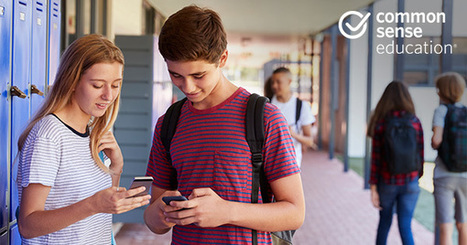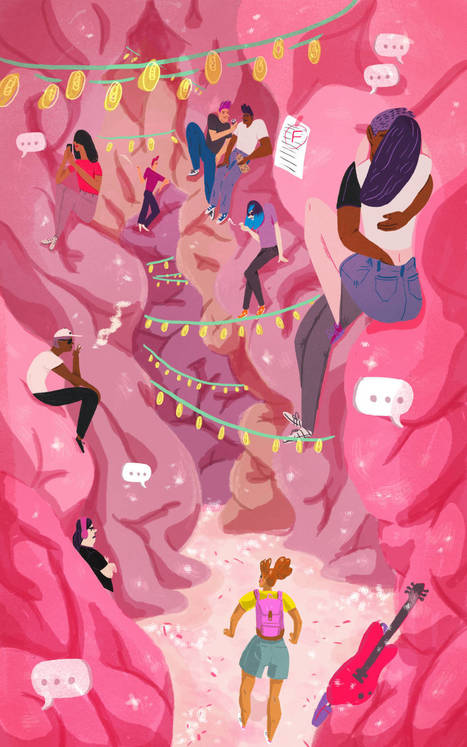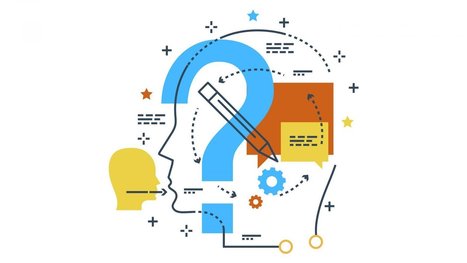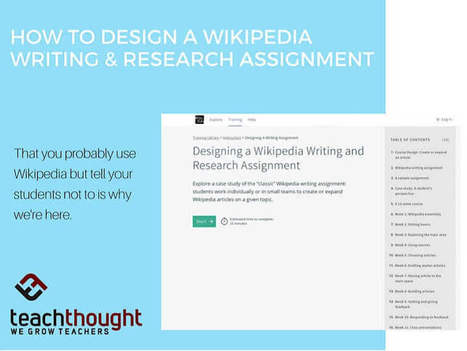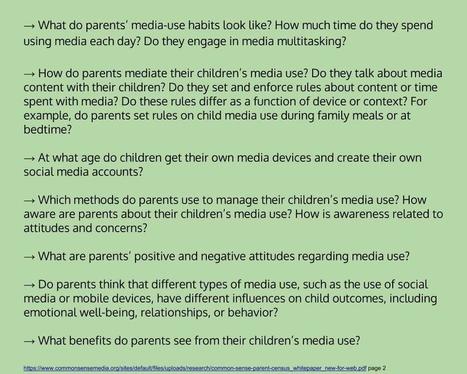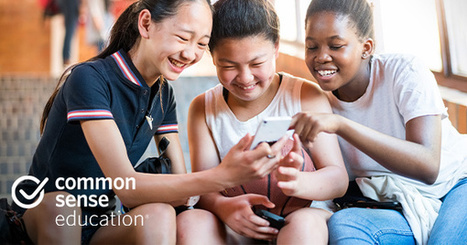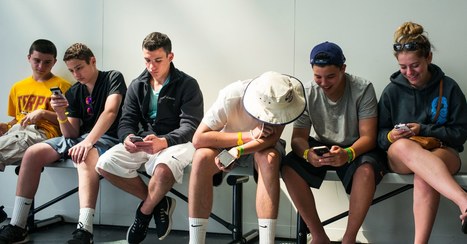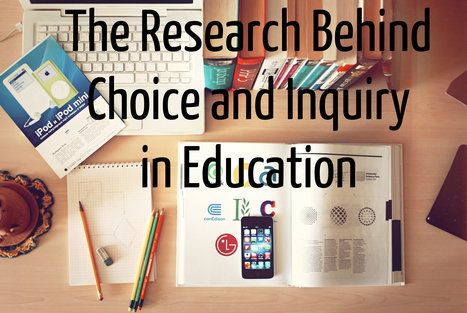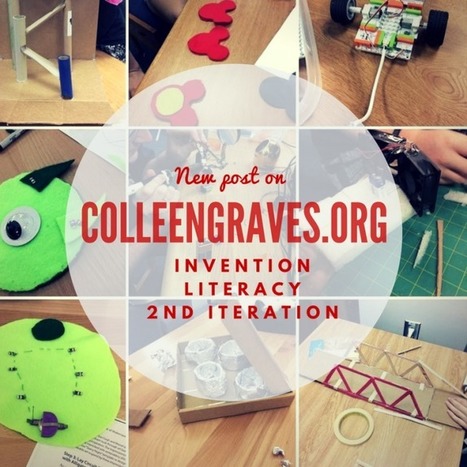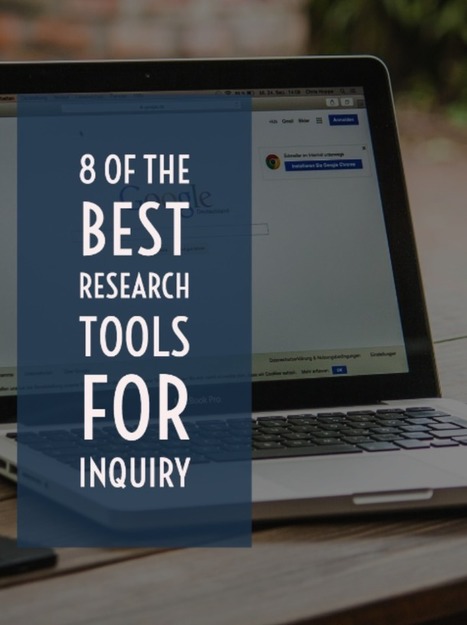 Your new post is loading...
 Your new post is loading...

|
Scooped by
John Evans
|
Research into young people’s experience of sending and sharing nude and nearly nude images — otherwise known as ‘sexting’.

|
Scooped by
John Evans
|
This morning kids were 3D printing some new designs. They were joined by a group working on a geometry problem. At lunch time, the Code Club worked on their snake robots (ironically coded in Python), then a team worked on unicorn designs. After the Engineering and Physics class, a group of kids worked on four panes that illustrate The Kite Runner.” Jayne Everson, Director of Robotics + Engineering and R+D Experience Lead at Beaver Country Day School summarized the eclectic forms of engagement experience on one day at the year-old Research + Design Center.
Nationally known for its forward-leading education, Beaver Country Day School released a Student Engagement Study today outlining the ways that big flexible spaces can unleash learning—in some expected and surprising ways.
To determine the impact of the Research + Design Center during its first year, three graduate students from the Harvard Graduate School of Education spent time interviewing, observing and surveying students and faculty. The study found that 95% of students understand topics better when learning in a collaborative, project-based space.
Replacing the old dark library, the school’s new 38,000 square foot Research + Design Center is a state-of-the-art innovation hub designed to promote student-driven learning. The Center hosts regularly scheduled classes, project teams, clubs and lots of drop-ins.
"Last month, we wrote about ways you can help your students determine real from fake news in the classroom. These tips are a way to start the conversation with your students about the importance of critical literacy and the responsibility to be digitally literate in the digital age. What do you think? Have you had this conversation with your students? We think it’s important to continue to teach these skills to our students since this issue will continue to be something they will need to decipher as they grow up. What we’ve found is that those original suggestions were just the tip of the iceberg. Our students are still being confronted with potential fake news every day. So, how do you continue to have these conversations with your students? In the classroom, we can encourage our students to become careful researchers to help slow the spread of fake news. "
Via Yashy Tohsaku

|
Scooped by
John Evans
|
As teachers, we all have assumptions -- and likely some opinions -– about teenagers and social media. But are those assumptions correct? Well, now we have research to help us find out. This week, Common Sense is releasing its latest research report, Social Media, Social Life: Teens Reveal Their Experiences, a deep dive into the social media habits of American teenagers.
This research is the second wave in an ongoing study tracking teens' attitudes about social media; we released our original report in 2012. Back then, Snapchat was just a fledgling start-up, and Facebook was a top choice for teens. But how -- and how much -- teens use social media has evolved almost as quickly as the technology itself. This year's report doesn't just tell us about teens today; compared with our original data, it shows us just how much things have changed.
It might seem like teens are using social media more than ever (it's true -- they are!). Teachers work with teens every day, so it makes sense that we have our own opinions and anecdotes about their social media use. But it's important to remember that our personal perceptions about social media might not always reflect what our students experience online. And that's why this research is so important. The results of this latest study help us question our assumptions and start addressing real issues that help our students.
http://www.w3.org/TR/xhtml1/DTD/xhtml1-strict.dtd"> A teenage brain is a fascinating, still-changing place. There's a lot going on: social awareness, risk-taking, peer pressure; all are heightened during this period.
Until relatively recently, it was thought that the brain was only actively developing during childhood, but in the last two decades, researchers have confirmed that the brain continues to develop during adolescence — a period of time that can stretch from the middle school years into early adulthood.
"We were always under the assumption that the brain doesn't change very much after childhood," explains Sarah-Jayne Blakemore, a professor of cognitive neuroscience at University College London.
But that's simply not the case, she says, and educators — and teens themselves — can learn a lot from this.

|
Scooped by
John Evans
|
Over the summer, I had a fascinating conversation with a group of educators. After spending several days discussing ways to encourage student inquiry, a technology specialist raised a pointed question: “What if the librarians already have a district-approved research process? Does what we’re doing conflict?” As I pondered her question, I realized a fundamental problem: inquiry and research had somehow morphed into synonyms.
Instead of answering her question, I posed another one: “Can students do research without inquiry, or inquiry without a formal research process?”

|
Scooped by
John Evans
|
That you probably use Wikipedia but tell your students not to is why we’re here.
Wikipedia has long been the bane of educators–a poster child for the ‘don’t believe everything you read on the internet because anyone can publish anything’ movement. While making for wonderful subject matter in teaching credibility, authority, source citations, and more, the idea of actually using Wikipedia to teach explicitly teach research for an entire unit is lesson common.
Luckily, the good folks at Wikipedia Education have you covered with the following (very long) unit. In the unit, students will create, edit, expand, and otherwise immerse themselves in the surprisingly complex world of public-knowledge-article editing.

|
Scooped by
John Evans
|
This morning, George Couros shared a post, “Not as much as you Pretend” in which he talks about perceived barriers vs actual barriers. He says, “Too often we create something in our heads as a barrier.”
Reading it prompted me to realize that I had been working on my own post about my similar thinking on the topic (in draft for 4 weeks because unfortunately my cognitive abilities are not quite back to normal!)
The findings in the report, Common Sense Consensus: Plugged in Parents of Teens & Tweens surprised me a little, but also support the notion that we sometimes perceive barriers which may not necessarily exist and that parents are far more supportive of technology-enabled learning than we think.
It is one of the first reports I have seen which focuses on the habits of parent social media use (if I am mistaken, please share in the comments!). The report is based on a nationally representative survey of 1,786 parents of children age 8 to 18 living in the United States and was conducted from July 8, 2016, to July 25, 2016. It seeks to answer these questions:
|

|
Scooped by
John Evans
|
As a classroom teacher, you know the way devices and media dominate kids' attention. You're out there every day managing student cellphones in the classroom, patiently listening to them share about their latest Fortnite accomplishments, and catching glimpses of TikTok memes between classes. But just how widespread are these activities, and how do they affect different student populations?
A new report from Common Sense, The Common Sense Census: Media Use by Tweens and Teens, 2019, helps us connect what we're observing in classrooms with larger trends. This nationally representative study on how kids age 8 to 18 use media highlights what kinds of access kids have to technology, what they're doing on those devices and how often, and how much they enjoy the various types of media activities they're engaged in. The report also compares how the data has changed since the first wave of the study in 2015.
For teachers, this big-picture perspective can help inform classroom management, teaching strategies, content choices, homework policies, and much more. Here are a few key takeaways from the findings, plus some relevant resources for your classroom.

|
Scooped by
John Evans
|
If you’ve opened this post hoping to read something brand-new, you might be disappointed. There will be no fancy bells or whistles here.
That’s because a lot of the strategies we’re going to talk about are things you’ve already done; some teachers have probably been doing them for decades. You just might not have known exactly why they worked or how to harness them in the most optimal way.
That’s what cognitive scientists have been doing, trying to pinpoint exactly which activities work best for storing concepts in long-term memory. Over the past few years, we’ve been following their progress: In our 2015 study of the book Make it Stick, we first talked about the concepts of retrieval practice, spaced practice, and interleaving. These concepts were also addressed in the 2016 post Six Powerful Learning Strategies You Must Share with Students, and in 2017, where I made a strong push again for using more retrieval practice in our teaching.

|
Scooped by
John Evans
|
The science of how technology affects happiness needs a huge statistical upgrade. A new paper charts a path toward better research.

|
Scooped by
John Evans
|
http://www.w3.org/TR/xhtml1/DTD/xhtml1-strict.dtd"> A teenage brain is a fascinating, still-changing place. There's a lot going on: social awareness, risk-taking, peer pressure; all are heightened during this period.
Until relatively recently, it was thought that the brain was only actively developing during childhood, but in the last two decades, researchers have confirmed that the brain continues to develop during adolescence — a period of time that can stretch from the middle school years into early adulthood.
"We were always under the assumption that the brain doesn't change very much after childhood," explains Sarah-Jayne Blakemore, a professor of cognitive neuroscience at University College London.
But that's simply not the case, she says, and educators — and teens themselves — can learn a lot from this.

|
Scooped by
John Evans
|
Jeopardy! has been on the air, in one form or another, since the 1960s. The modern Alex Trebek-hosted incarnation of the show—whose famous theme song is now in your head (sorry!)—began in 1984 and still airs about 230 episodes every year.
There is an art to a Jeopardy! clue. Its answers-in-search-of-questions exude a certain tone and tenor that’s different from trivia offerings from Who Wants to Be a Millionaire, HQ, The Weakest Link, or even a throwback like You Bet Your Life. But the writer’s room is also a factory, one that must churn out 61 clues per episode, which adds up to hundreds of thousands of clues aired during the show’s long run.

|
Scooped by
John Evans
|
Updated: I've updated this post and page since publishing my most recent book about student choice. I'd love for you to add resources you've found in the comments section of this post so I can

|
Scooped by
John Evans
|
"I’m excited to be starting the second version of the Invention Literacy Research project this year with a second English Language Arts teacher!"
|
 Your new post is loading...
Your new post is loading...
 Your new post is loading...
Your new post is loading...








